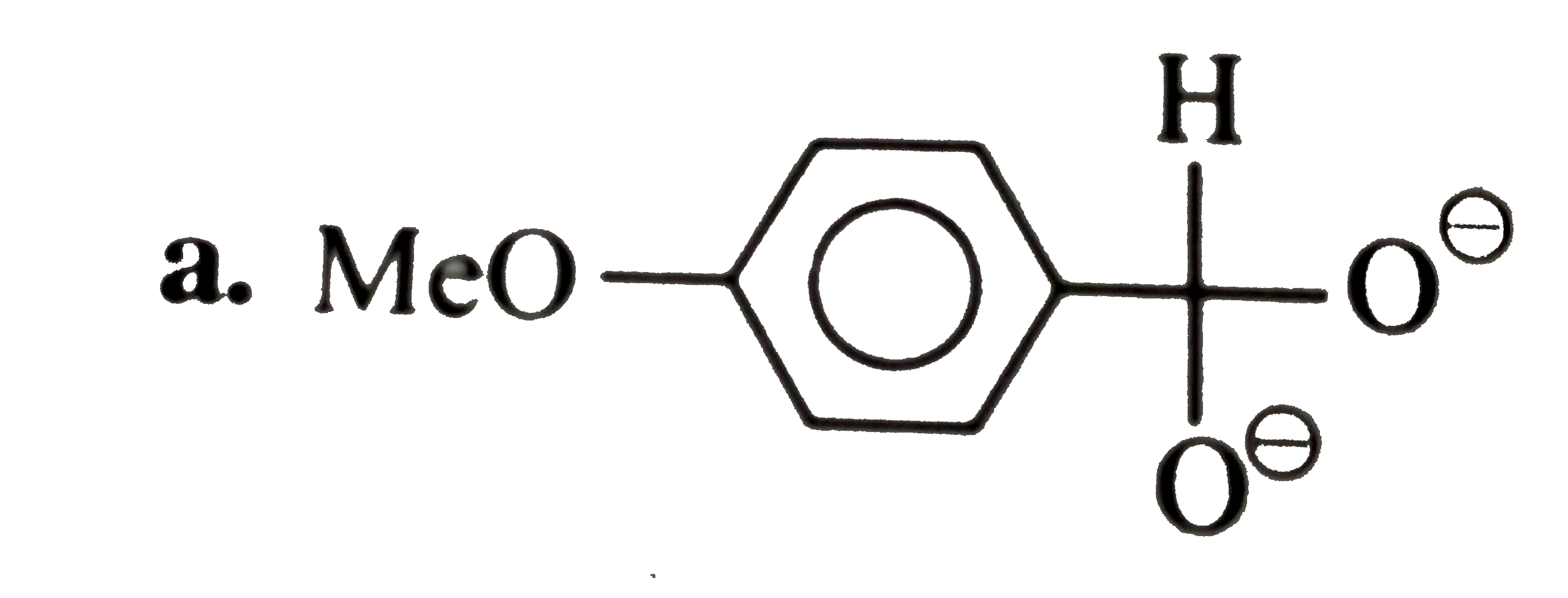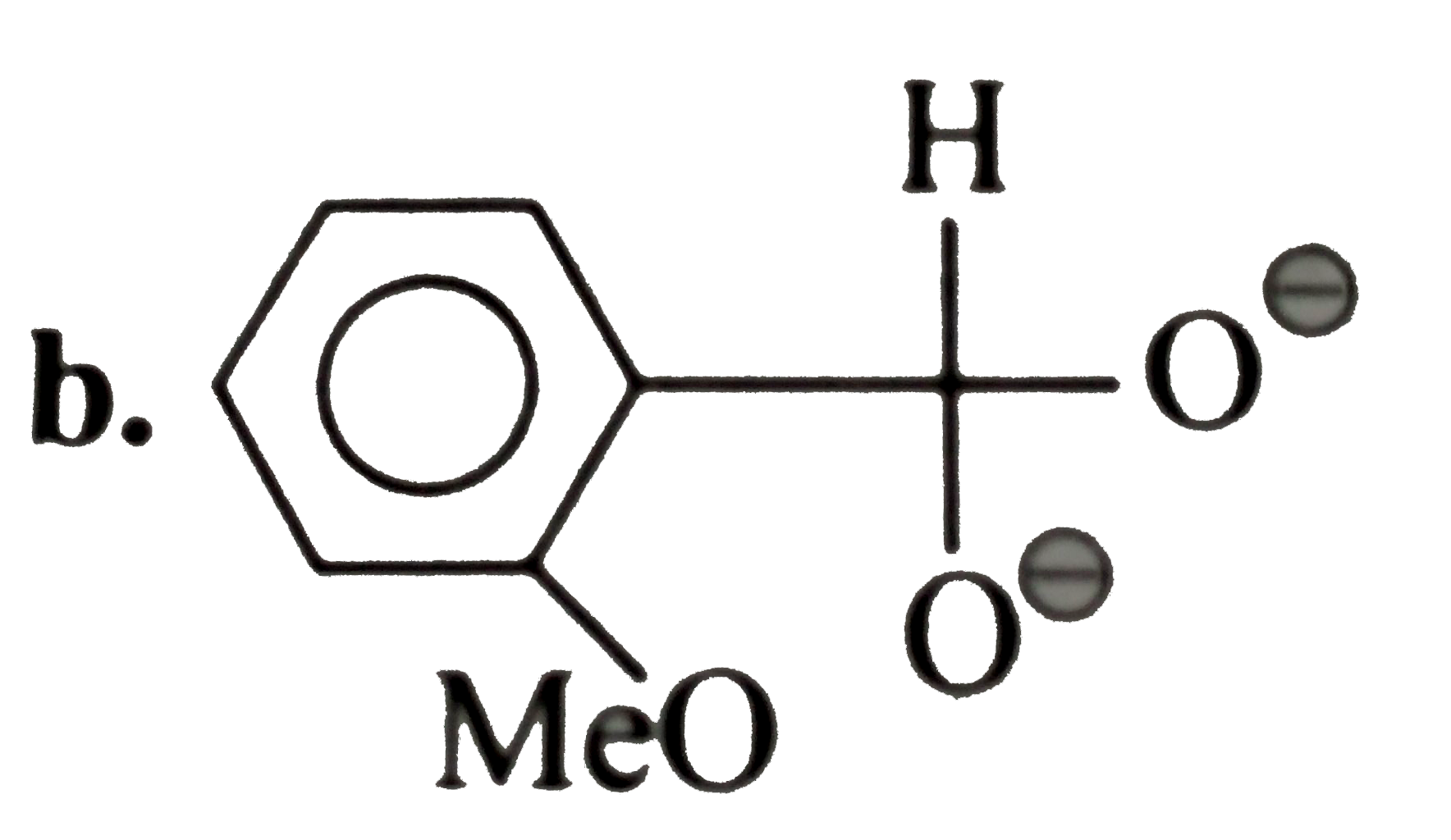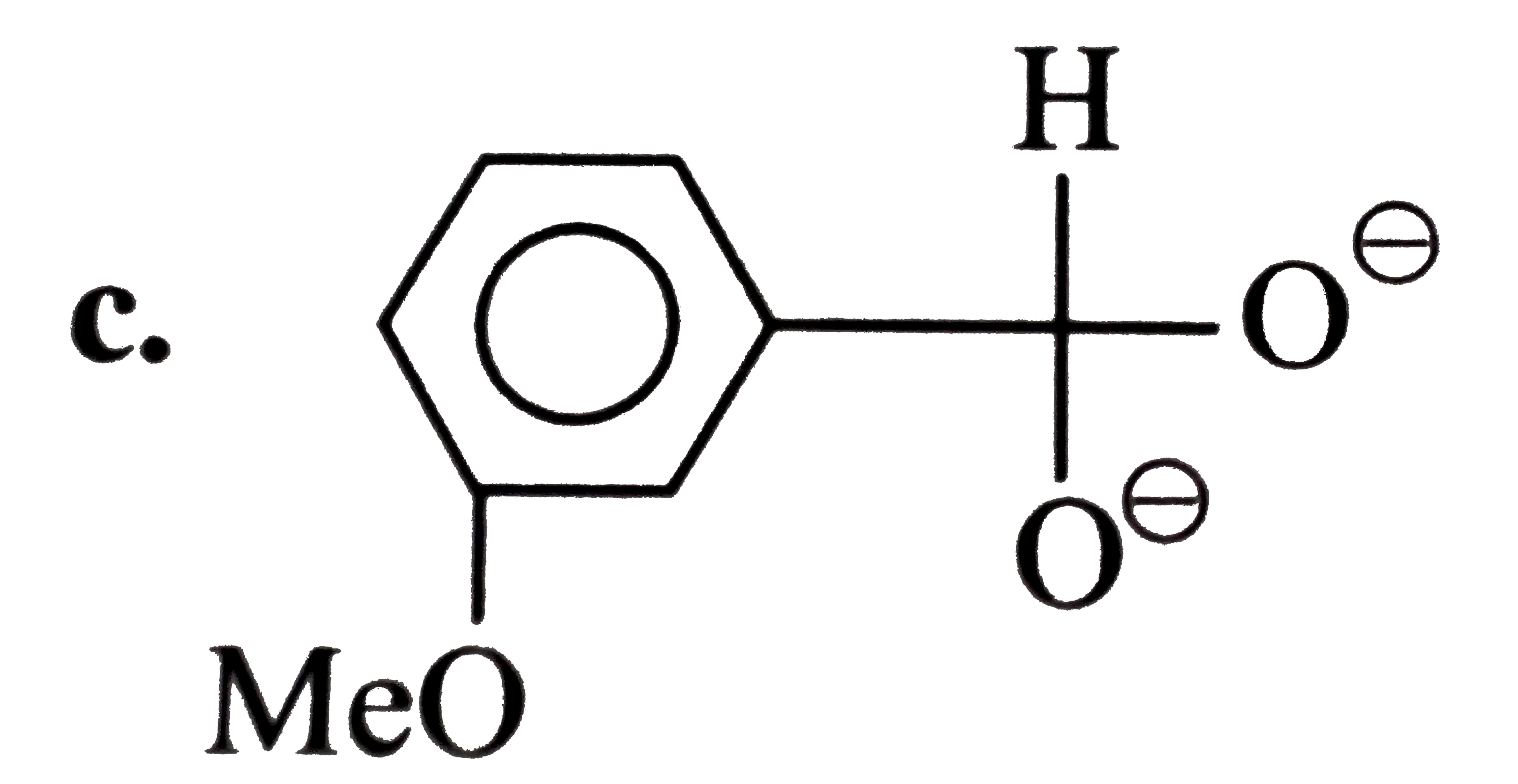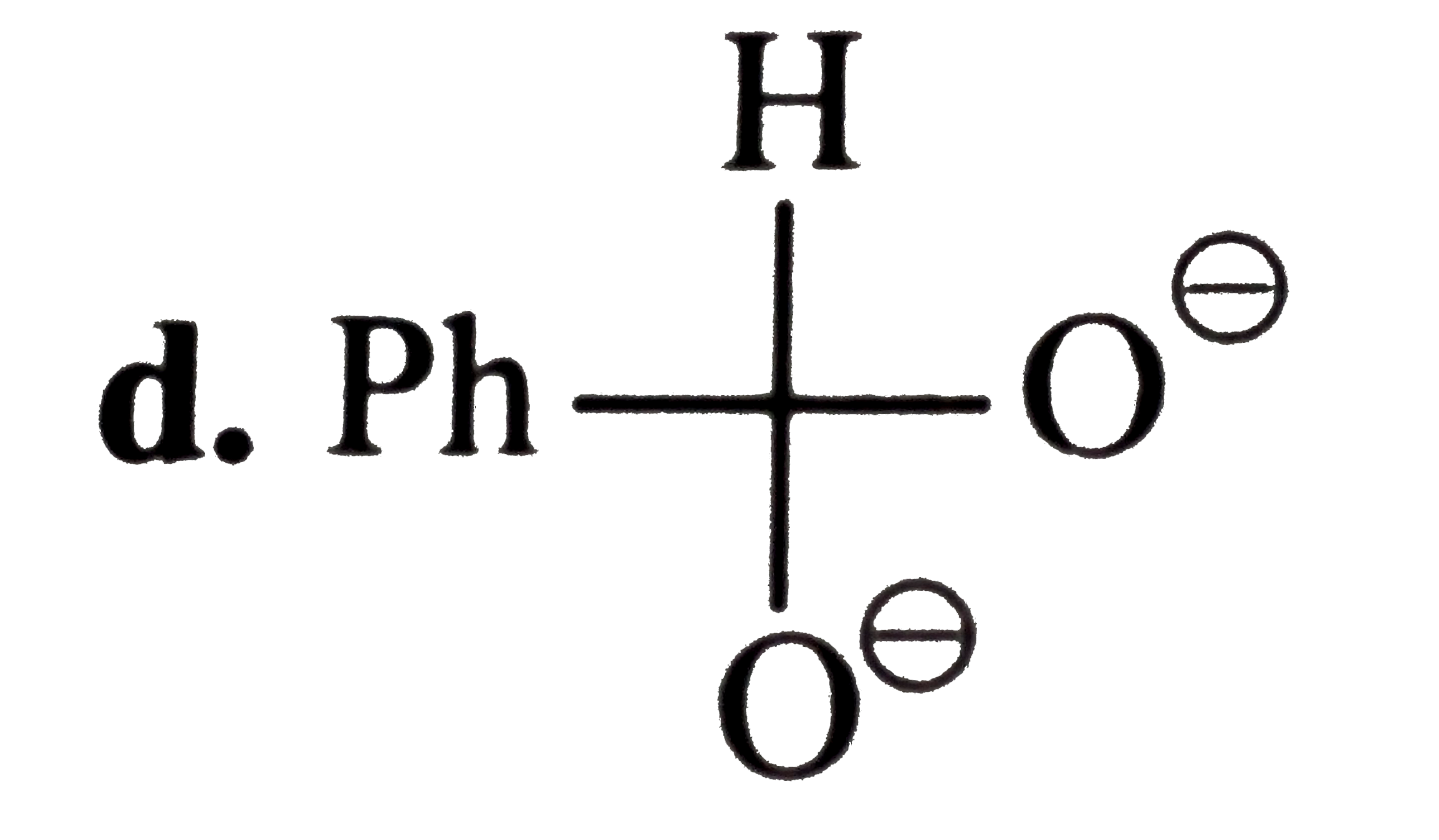Among the following, the best and the least HΘ ion donor, respectively, are:




The correct Answer is:A, C
To determine the best and least hydride ion donor among the given compounds, we need to analyze the electron density around the carbon atom that is donating the hydride ion (H⁻). Higher electron density on the carbon makes it a better hydride donor, while lower electron density makes it a poorer donor.
1. Identify the Compounds: We have four compounds to analyze. Let's denote them as A, B, C, and D. Each compound has different substituents that affect the electron density on the carbon atom.
2. Analyze Compound A:
- Compound A has a methoxy group (–OCH₃) at the para position of a phenyl ring.
- The methoxy group exhibits a +R (resonance) effect which increases electron density on the carbon atom.
- The –OCH₃ group also has a –I (inductive) effect, but the +R effect is dominant here.
- Therefore, compound A has the highest electron density and is the best hydride ion donor.
3. Analyze Compound B:
- Compound B has a methoxy group at the ortho position.
- Similar to compound A, the methoxy group contributes to electron density through the +R effect, but the –I effect is also present.
- However, the ortho position has a stronger –I effect due to proximity, which slightly decreases the electron density compared to compound A.
- Thus, compound B is a good hydride donor but not as good as compound A.
4. Analyze Compound C:
- Compound C has a phenyl group without any substituents.
- The phenyl group has a –I effect, which withdraws electron density from the carbon atom.
- Therefore, compound C has lower electron density compared to compounds A and B, making it a poorer hydride donor.
5. Analyze Compound D:
- Compound D has a methoxy group at the meta position.
- At the meta position, the methoxy group does not contribute to resonance with the carbon atom in question, so it only exhibits a –I effect.
- This results in the lowest electron density among the compounds analyzed.
- Therefore, compound D is the least hydride ion donor.
6. Conclusion:
- After analyzing all compounds, we conclude that compound A is the best hydride ion donor due to its high electron density, while compound D is the least hydride ion donor due to its low electron density.
Final Answer:
- Best hydride ion donor: Compound A
- Least hydride ion donor: Compound D
- Compound A has a methoxy group (–OCH₃) at the para position of a phenyl ring.
- The methoxy group exhibits a +R (resonance) effect which increases electron density on the carbon atom.
- The –OCH₃ group also has a –I (inductive) effect, but the +R effect is dominant here.
- Therefore, compound A has the highest electron density and is the best hydride ion donor.
- Compound B has a methoxy group at the ortho position.
- Similar to compound A, the methoxy group contributes to electron density through the +R effect, but the –I effect is also present.
- However, the ortho position has a stronger –I effect due to proximity, which slightly decreases the electron density compared to compound A.
- Thus, compound B is a good hydride donor but not as good as compound A.
- Compound C has a phenyl group without any substituents.
- The phenyl group has a –I effect, which withdraws electron density from the carbon atom.
- Therefore, compound C has lower electron density compared to compounds A and B, making it a poorer hydride donor.
- Compound D has a methoxy group at the meta position.
- At the meta position, the methoxy group does not contribute to resonance with the carbon atom in question, so it only exhibits a –I effect.
- This results in the lowest electron density among the compounds analyzed.
- Therefore, compound D is the least hydride ion donor.
- After analyzing all compounds, we conclude that compound A is the best hydride ion donor due to its high electron density, while compound D is the least hydride ion donor due to its low electron density.
- Best hydride ion donor: Compound A
- Least hydride ion donor: Compound D
Topper's Solved these Questions
- ALIPHATIC AND AROMATIC ALDEHYDES AND KETONESBook:CENGAGE CHEMISTRY ENGLISHChapter:ALIPHATIC AND AROMATIC ALDEHYDES AND KETONESExercise:Exercises Single Correct
Explore 71 Videos
- ALIPHATIC AND AROMATIC ALDEHYDES AND KETONESBook:CENGAGE CHEMISTRY ENGLISHChapter:ALIPHATIC AND AROMATIC ALDEHYDES AND KETONESExercise:Exercises Assertion-Reasoning
Explore 6 Videos
- ALIPHATIC AND AROMATIC ALDEHYDES AND KETONESBook:CENGAGE CHEMISTRY ENGLISHChapter:ALIPHATIC AND AROMATIC ALDEHYDES AND KETONESExercise:Exercises Linked Comprehension
Explore 59 Videos
- ALCOHOL,PHENOL AND ETHERSBook:CENGAGE CHEMISTRY ENGLISHChapter:ALCOHOL,PHENOL AND ETHERSExercise:Archives Analytical And Descriptive
Explore 15 Videos
- APPENDIX INORGANIC VOLUME 2Book:CENGAGE CHEMISTRY ENGLISHChapter:APPENDIX INORGANIC VOLUME 2Exercise:Short Answer Type
Explore 179 Videos
Similar Questions
Knowledge Check
Which one among the following is the least basic?
ACH3NH2B..NH3CCH3CH2NH2D
Among the following which is the least basic
View SolutionAmong the following the least soluble sulphate is
View SolutionWhich one among the following is the least basic:
View SolutionAmong the following, the least stable resonance structure is :
View SolutionWhich among the following is the least soluble in water
View SolutionAmong the following, least soluble compound in water is
View SolutionAmong the following oxides, which is least acidic ?
View Solution